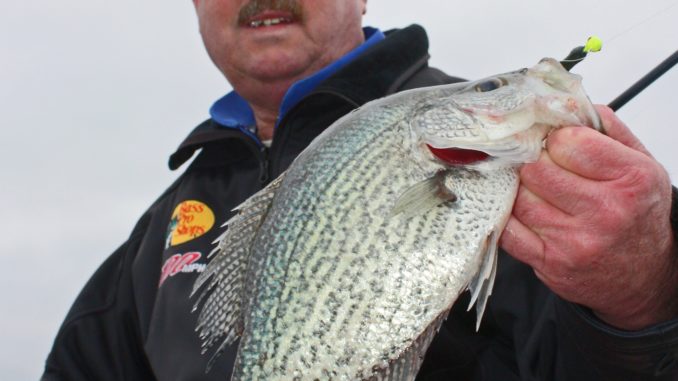
With slabs moving to and from spawn, Charlotte angler is covering plenty of water
The crappie fishing at Lake Wylie has been hot and cold this spring – just like the weather – but one crappie fishermen has the formula to produce plenty of action. Mike Parrott of Charlotte, N.C., said that late April is a prime time for longline trolling to find crappie as they move through the creeks, and the fishing is excellent.
“This is my favorite time of the year to longline at Lake Wylie,” Parrott said. “The crappies are in the creeks and are in various stages of the spawn during the latter part of April, depending on which area you fish. They will typically be on the move, and longline trolling enables me to cover enough water to find the fish and then focus on that area and catch a bunch.”
Parrott is a former Crappiemasters National Champion, the only person to win the event as an individual fisherman in what is typically a two-man team event.
“When I get on fish in a certain area, that’s where I’d go the next day, but they’ll move a good bit at this time of year,” Parrott said. “If they’ve moved, I’ll often get in the back of the creeks and work my way out. I’ll pull eight rigs and will use different length poles to effectively cover as much water area as I can. I’ll have a 16-, 14-, 12- and 10-foot B’n’M rigs on each side of the boat, allowing me to space them in a manner where I can cover a wide swath of water.
“I use Rockport Rattler jigheads and 6-pound Vicious line and dress the jigs with a Slider or Triple Ripple-type plastic,” Parrott said. “I prefer a 1/32-ounce jighead during the last couple of weeks in April into early May, and I pull the rigs slowly. As the fish migrate, they’re now in water only 4 to 5 feet deep, and I’ll be pulling the jigs in a 3- to 4-foot depth range.
“I key on specific targets; it’s not random,” he said. “The fish will suspend over points, the edge of drops and often gather in the backs of the creeks over flats and any available woody cover. Crappies will suspend over deeper water, so if not successful in the shallows, I work water deeper, sometimes down to 10 to 15 feet.
Parrott said that when he finds fish in the back of creeks in shallow water, he will sometimes change from longlining to spider-rigging.
“When they get into the shallows in the back of the creeks, I’ll often find them bunched up and will tightline in spider-rig fashion,” he said. “This enables me to target specific places where I find fish more effectively. I use a double-hook system with jigs on the bottom and a live minnow on the top hook on each of the eight tightline rods.”
Parrott said he finds it best to be able to fish both North and South Carolina waters.
“At this time of the year, I have to adapt to changing weather and water conditions and to find fish in different stages of the shallow water process,” Parrott said. “I will fish creeks in both states to find the most productive water for the current water and weather conditions. Catawba Creek is a productive area, but being able to go from one side of the lake to the other can be important when searching for crappies right now.”


Be the first to comment